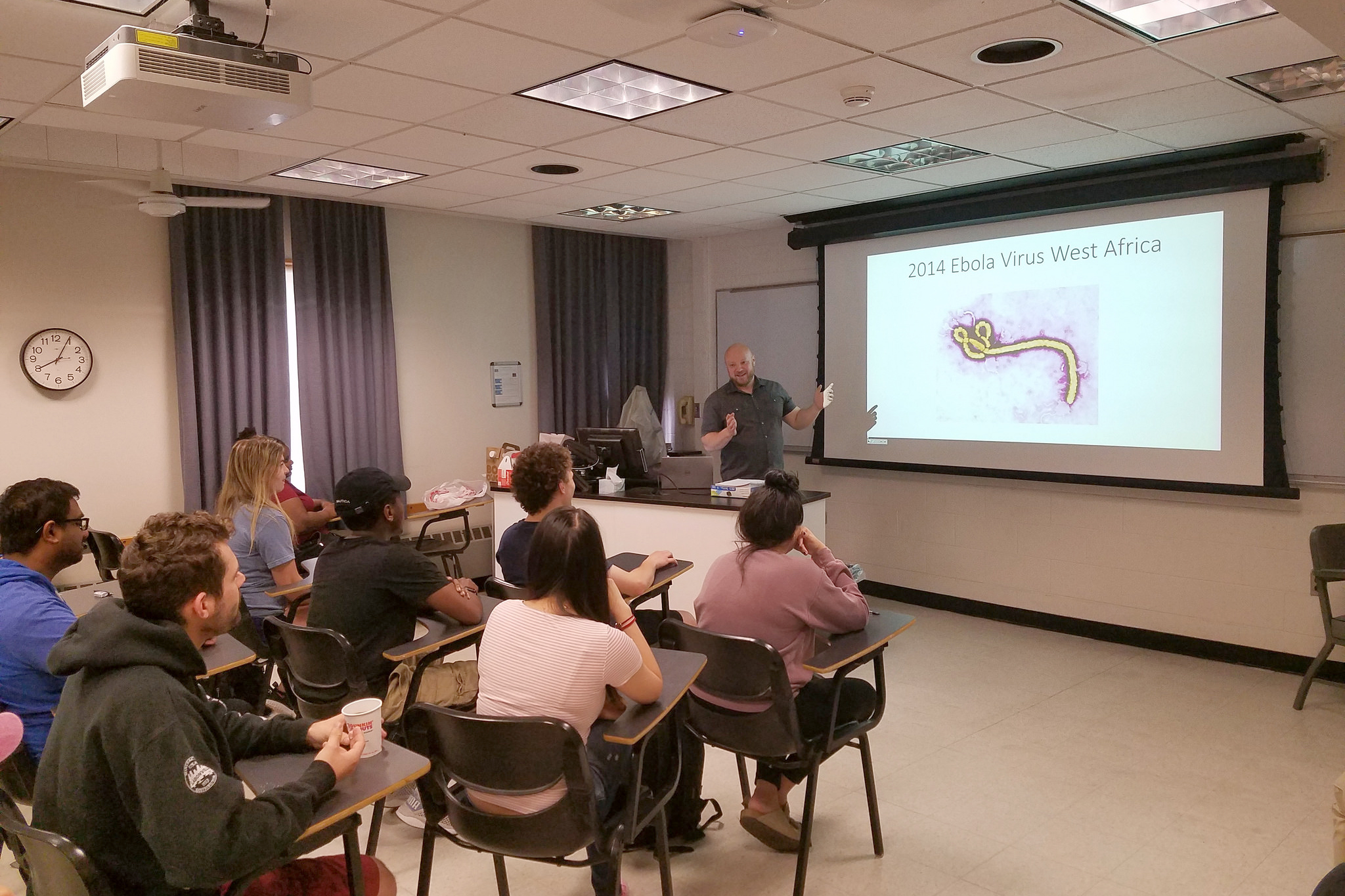From the Black Death that swept through Asia and Europe in the fourteenth century to astrobiology and the potential for humans to encounter alien pathogens, a course taught by Assistant Professor Steven Szczepanek of the Department of Pathobiology and Veterinary Scienceambitiously explores many aspects of different communicable illnesses in the undergraduate course Emerging Infectious Diseases. The course focuses on the upsurge in recent decades of the frequency with which animals and humans are facing new bacteria and viruses.
New infectious diseases represent one of the largest threats to global public health. Diseases are appearing and spreading faster than at any other point in human history. A decade ago, the World Health Organization (WHO) issued a report revealing an alarming trend, concluding that at least one new disease has been appearing yearly since the 1970s. The WHO also raised concerns in the publication about the rapidity with which these contagions could spread and become global pandemics.
“We discuss current topics in conjunction with historical examples to talk about the mechanisms of disease emergence to help students better understand how and why diseases appear and spread,” says Szczepanek. “Much of why we’re seeing so many new pathogens is largely tied to human actions. In order to recognize how our behaviors play a role in infectious diseases, this class incorporates a wide range of topics that venture beyond your average science course.”
Szczepanek delves into history, socioeconomics, politics, religion, climate change, agricultural practices and even recreational activities to illustrate how human behaviors affect the occurrence and transmission of human and animal pathogens. Zoonotic diseases are a crucial focus



